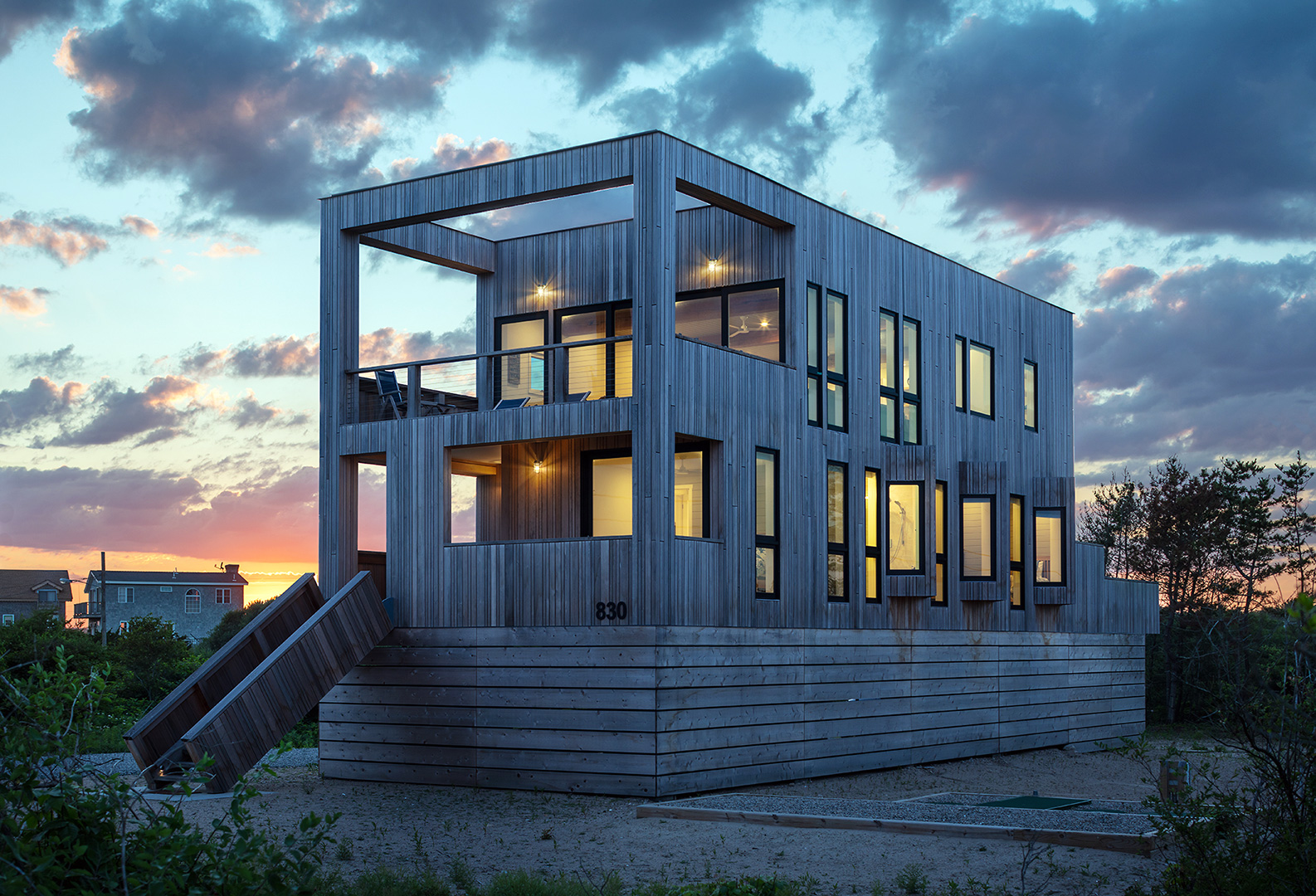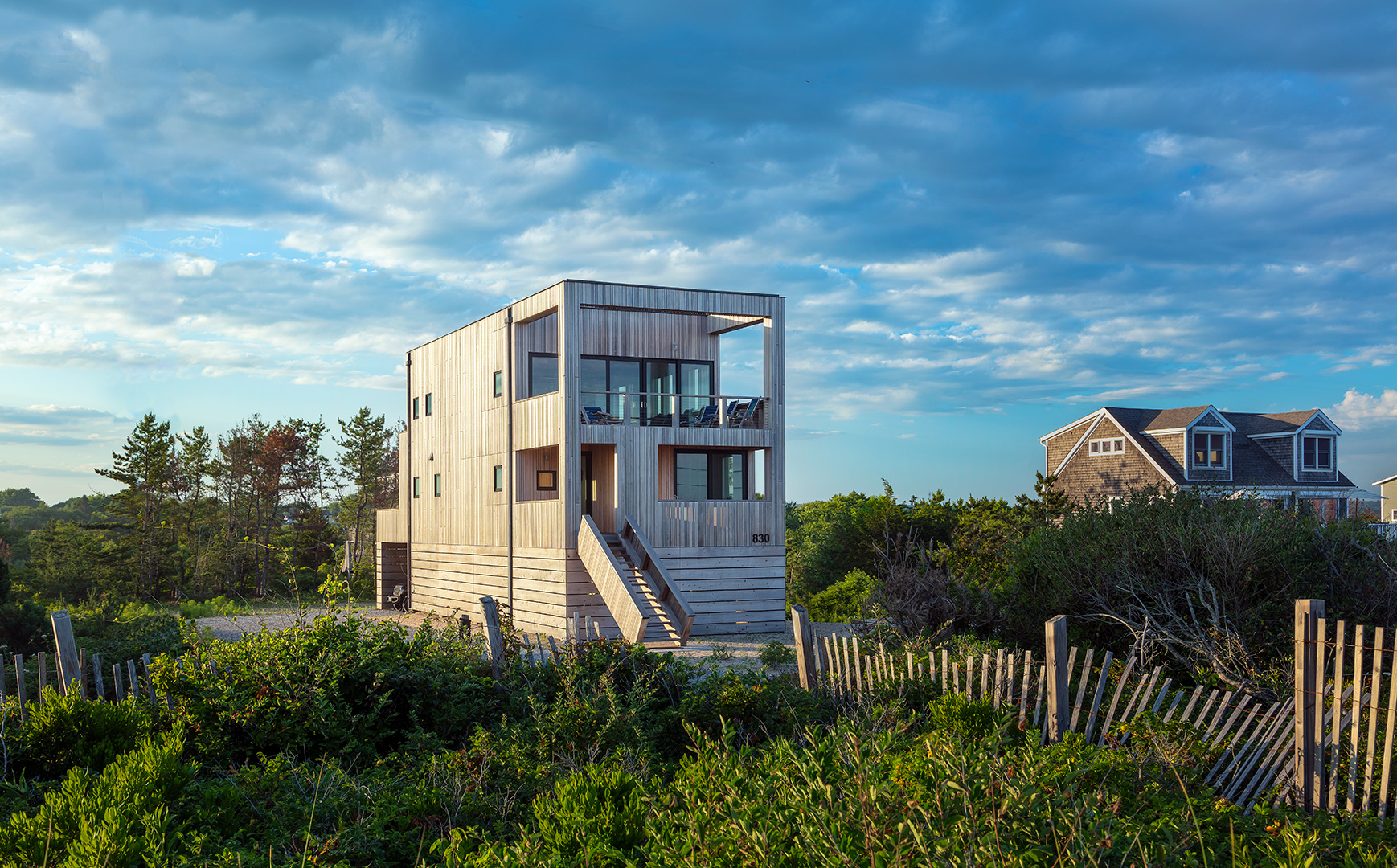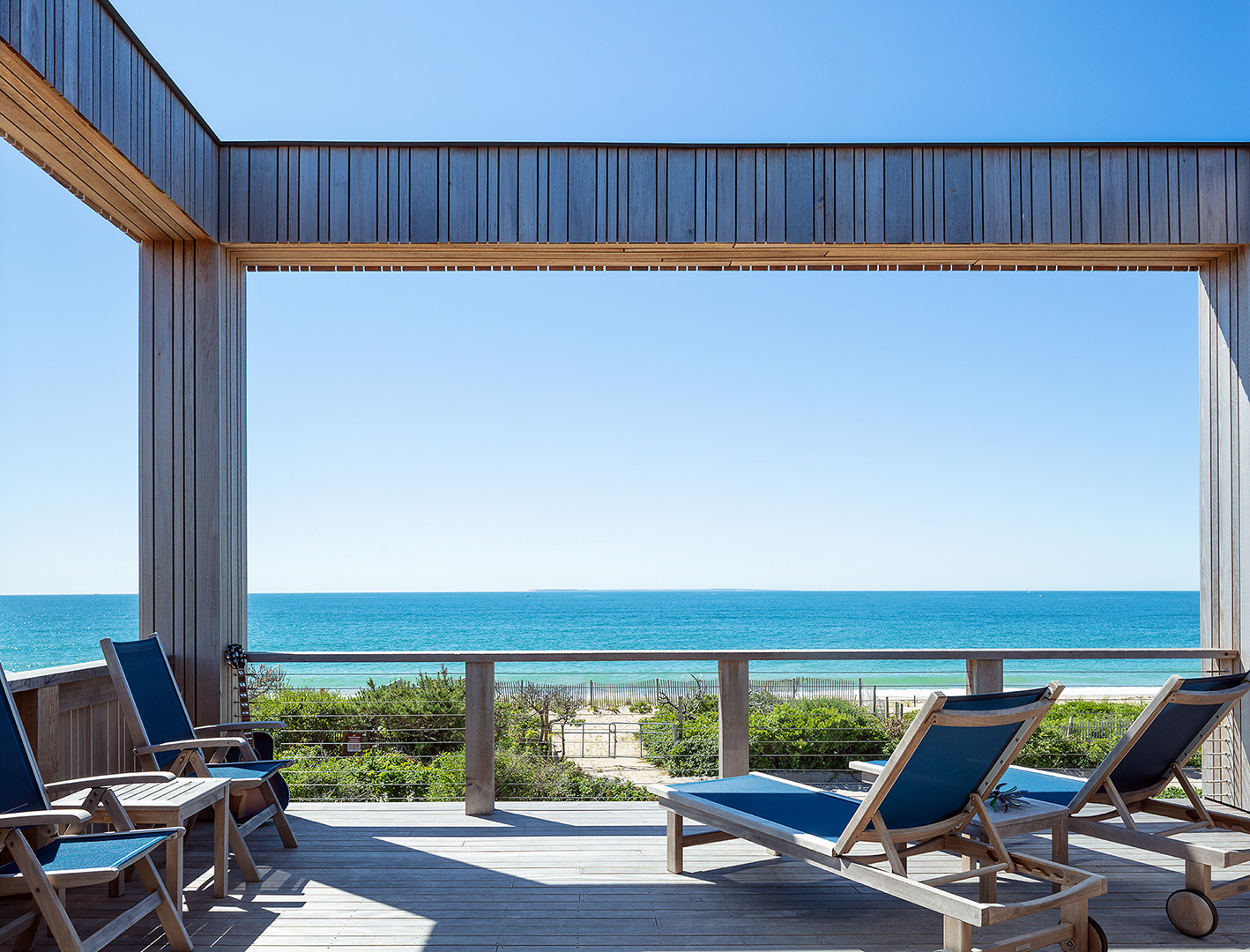Back
Back
Back
Back
Back
Back
Back
Back
Back
Back
USA & Canada
Project of the Week – Charlestown Beach House
Sign up now for our DIY Project Newsletter

Architect: KITE Architects
Location: South Kingstown, Rhode Island, USA
Photo: Warren Jagger
In 2012, Hurricane Sandy wreaked havoc on this part of Rhode Island. This left behind eroded beaches and an increasingly vulnerable coastal environment. Consequently, this waterfront project presented an incredible opportunity for KITE Architects to explore innovative design solutions for long-term threats of weather, energy dependence, and sea level rise related to climate change.
“A high priority was placed on the selection of long lasting, durable materials and development of construction details to withstand the severe weather,” explains Albert Garcia, AIA, KITE Architects’ Principal. “As such, the house is clad with a rainscreen wall system comprised of Western Red Cedar arranged in a pattern that follows a rigorous and consistent module as it cascades across projections and recesses.”

Aesthetically, the owner wanted to create a house that celebrates contemporary design and meticulous craftsmanship. Again, Western Red Cedar siding met those requirements as well.
“Using the form of a ship as a metaphor and inspiration, and the material palette of a traditional coastal cottage, the design for the house is based on an orderly composition of simple forms that is distinctively unique compared to its traditional New England neighbors,” says the award-winning architect.“The horizontal 1×12 cedar boards are meant to recall the planking of a ship’s hull. The rough texture of the select knotty grade provides a contrast to the smoothly finished, machined edges of the vertical siding.”

Technically, an integral part of a pressure equalized rainscreen cladding system is the cedar siding. They improve the thermal and weathering performance of the exterior envelope. For finishing, they let all the cedar weather naturally. As Garcia explains, the reason to leave it unfinished was twofold.
“The silver-gray color and texture of weathered Western Red Cedar is naturally beautiful and fits into the local coastal cottage aesthetic.”
Western Red Cedar Specifications
GRADE: KD ‘A’ & Better vertical siding and KD Select Knotty horizontal boards
SIZE: 1×4, 1×6, 1×8 and 1×12
APPLIED FINISH: None
FASTENING Ring shank nails
SUPPLIER: Retailer – Liberty Cedar, Manufacturer – PowerWood, Distributor – Mid-State Lumber & Hood Distribution – McQuesten Group
© 2025 All rights reserved
Gatsby Website Development by Jambaree